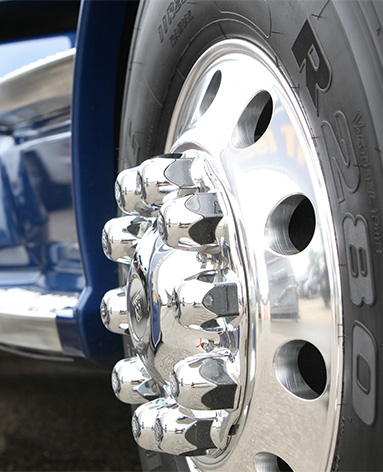Dec . 11, 2024 18:26 Back to list
large brake drum
Understanding Large Brake Drums Importance, Function, and Maintenance
In the realm of automotive engineering and safety, the significance of brake systems cannot be overstated. Among the various components that play a pivotal role in enhancing braking performance, large brake drums stand out. These components, typically found in heavier vehicles and certain high-performance applications, are instrumental in ensuring efficient stopping power and overall vehicle safety.
What are Brake Drums?
Brake drums are hollow, cylindrical components that house the braking mechanism, primarily consisting of brake shoes that press against the inner surface of the drum to create friction. The design of brake drums allows for a larger surface area, which is beneficial for vehicles that require more robust braking systems, such as trucks, buses, and certain specialized agricultural machinery. When the brake pedal is engaged, hydraulic force pushes the brake shoes outward against the spinning drum, converting kinetic energy into thermal energy, which slows down the vehicle.
Advantages of Large Brake Drums
One of the foremost advantages of large brake drums is their capacity to dissipate heat. Braking generates significant heat due to friction, and the larger surface area of these drums helps distribute and release this heat more effectively. This characteristic reduces the risk of brake fade, a condition where brakes lose their effectiveness due to overheating, ensuring reliable performance even during extended or heavy braking scenarios.
Additionally, large brake drums can enhance braking power. With more area available for friction, the braking force can be increased, providing superior stopping power. This is especially crucial for heavy vehicles that carry substantial loads and require more force to bring them to a halt safely.
large brake drum

Applications of Large Brake Drums
Large brake drums are predominantly employed in vehicles that experience high stress on their braking systems. Commercial trucks, for instance, are commonly equipped with them, given their need to manage heavy loads and frequent stops. Similarly, buses and other public transport vehicles utilize large drum brakes to ensure passenger safety. Beyond road vehicles, large brake drums are also found in rail systems and certain industrial machinery, where stopping power and heat management are paramount.
Maintenance of Large Brake Drums
Proper maintenance of large brake drums is essential to ensure their longevity and effectiveness. Regular inspections should be conducted to check for signs of wear, such as scoring or cracking on the drum surface. If the drums are damaged, they may need to be resurfaced or replaced to maintain optimal performance.
Another critical aspect of maintenance is monitoring the brake shoes. The shoes should be aligned correctly and not worn down excessively, as this can impair the drum’s performance. Routine checks and replacements of brake fluid are also necessary, as hydraulic systems rely on clean, effective fluid for reliable operation.
Conclusion
In conclusion, large brake drums serve as a fundamental component of vehicle safety, especially in heavier vehicles that demand increased stopping power. Their design not only facilitates effective heat dissipation but also enhances braking force, making them indispensable for commercial and specialized automobile applications. However, like all mechanical components, they require regular maintenance to function effectively. Understanding the importance and functionality of large brake drums can help vehicle owners and operators appreciate their role in road safety, ultimately leading to better driving experiences. Whether you are an enthusiast or a casual driver, recognizing the intricacies of brake systems can contribute to a safer journey on the road.
-
Volvo Brake Drum: OEM Quality, Optimal Safety
NewsAug.27,2025
-
Durable Brake Drum MAZ for Heavy Duty Trucks | High Performance
NewsAug.26,2025
-
FUWA: Premium Quality, Reliable Performance & Innovative Solutions
NewsAug.25,2025
-
Liza Brake Drum: Superior Quality & Performance for Safe Driving
NewsAug.24,2025
-
Iveco Brake Drum | Premium OE Quality for Daily & Eurocargo
NewsAug.22,2025
-
Your Brake Drum Man: Quality & Performance Parts
NewsAug.21,2025
